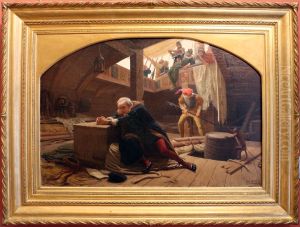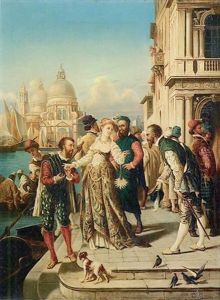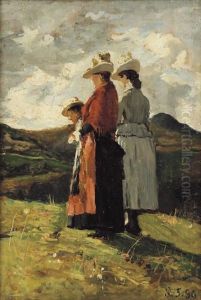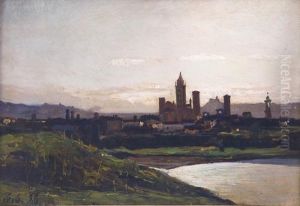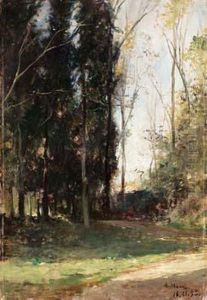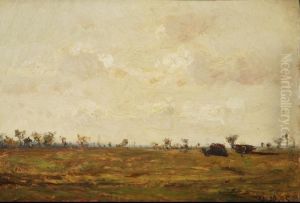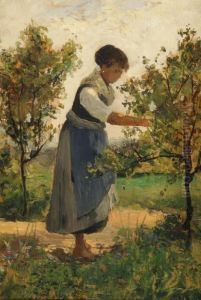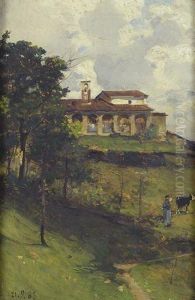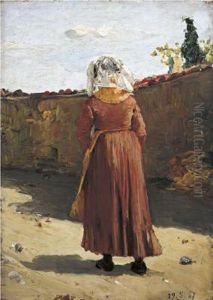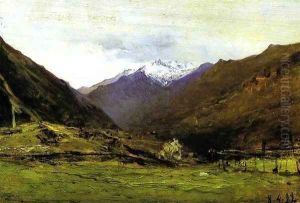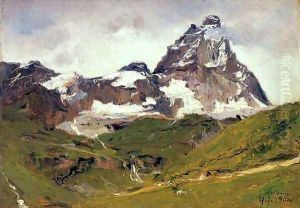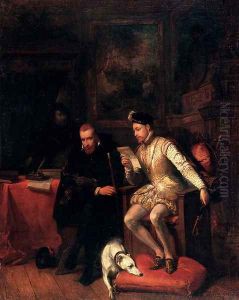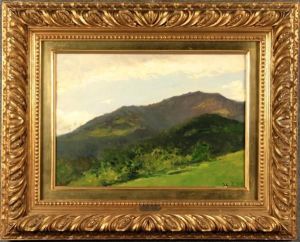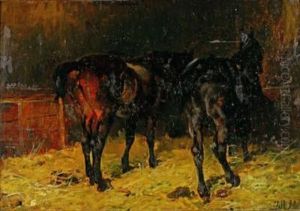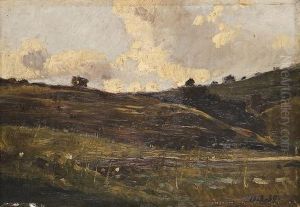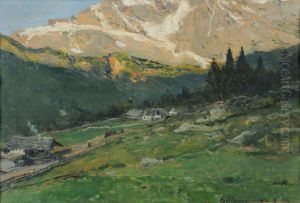Lorenzo Delleani Paintings
Lorenzo Delleani was an Italian painter born on November 18, 1840, in Pollone, a small town near Biella, in the Piedmont region of Italy. He is primarily known for his landscape paintings and his contribution to the Italian Divisionism movement, a variant of Pointillism. Delleani initially studied at the Albertina Academy in Turin, and his early work was influenced by the Romanticism of the time, particularly the paintings of the Piedmontese school.
Delleani's work evolved significantly throughout his career. After his initial phase influenced by Romanticism, he began to explore the effects of light and naturalistic details in his landscapes. His style was characterized by a delicate touch and a bright, luminous palette that captured the changing effects of light on the Italian countryside.
In the 1880s, Delleani became interested in the Divisionist technique, which involved the use of distinct strokes of color to capture the vibrancy and dynamism of light. He applied this method to depict the rural landscapes of his native Piedmont, creating works that shimmered with a tapestry of colors and light. This approach set him apart from many of his contemporaries and aligned him with the broader European movement towards Post-Impressionism.
Delleani exhibited his work regularly in Italian shows and also participated in international exhibitions, such as the Paris Salon. His work was well received, and he gained recognition not only in Italy but also among European art circles.
Throughout his life, Delleani remained deeply connected to his native region, and many of his paintings are celebrations of the Piedmontese landscape. He passed away on April 15, 1908, in Turin. Today, Delleani's work is recognized for its contribution to the development of modern Italian painting, and his landscapes are celebrated for their poetic interpretation of nature, light, and color.
